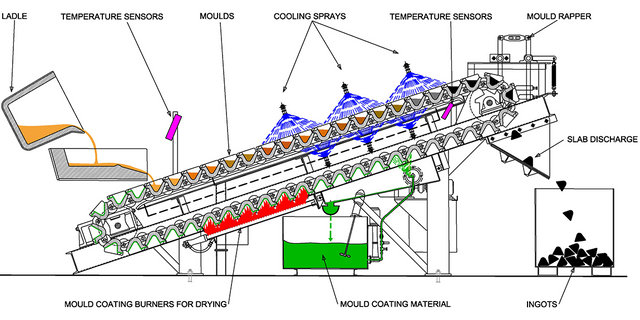Deox cone casting machine

In the realm of modern manufacturing, the demand for high-quality, precision-cast components is ever-increasing. One of the key players in meeting this demand is the deox cone casting machine, a remarkable piece of equipment that has been making waves in various industries. This article delves deep into the world of deox cone casting machines, exploring their functionality, advantages, applications, and much more.
Understanding the Deox Cone Casting Machine
A deox cone casting machine is a specialized device designed to produce castings with exceptional precision and quality. It operates on the principle of investment casting, also known as the lost-wax process. At the heart of this machine is the ability to create a detailed and accurate mold, which is then used to cast the final product.
The process begins with the creation of a wax pattern that resembles the desired final component. This wax pattern is carefully crafted, taking into account all the intricate details and dimensions of the part to be cast. Once the wax pattern is complete, it is attached to a sprue system, which will serve as the pathway for the molten metal to flow into the mold.
The wax pattern assembly is then coated with a refractory material, typically a ceramic slurry. This coating is applied in multiple layers to build up a sufficient thickness, creating a strong and durable mold shell. After each layer of coating, the assembly is dried to ensure proper adhesion and solidification of the refractory material.
Once the mold shell is fully formed, it is placed in a deox cone casting machine. The machine then heats the mold shell to a high temperature, which causes the wax to melt and drain out of the shell through the sprue system. This step is crucial as it leaves behind a cavity within the mold shell that is an exact negative of the original wax pattern.
Next, the machine is used to pour the molten metal into the now-empty mold cavity. The choice of molten metal depends on the specific requirements of the final component, with common options including various alloys of steel, aluminum, and copper. The metal is poured carefully to ensure complete filling of the cavity without any air pockets or defects.
After the metal has cooled and solidified within the mold, the mold shell is broken away, revealing the final cast component. This component then undergoes further finishing processes such as machining, polishing, and heat treatment to achieve the desired surface finish and mechanical properties.
Key Features and Advantages of Deox Cone Casting Machines
Precision and Detail Reproduction One of the standout features of deox cone casting machines is their ability to reproduce complex geometries and intricate details with remarkable accuracy. The lost-wax process allows for the creation of wax patterns that can capture even the finest features of the desired component. When these patterns are translated into the final casting, the result is a product that closely matches the original design specifications, making it ideal for applications where precision is of utmost importance, such as in the aerospace and medical industries.
High-Quality Castings Deox cone casting machines are engineered to produce castings of superior quality. The controlled heating and pouring processes within the machine ensure that the molten metal fills the mold cavity evenly and without any significant defects. This leads to castings with a consistent microstructure, which in turn results in improved mechanical properties such as strength, hardness, and ductility. Additionally, the ability to use a wide range of metals and alloys further expands the possibilities for creating high-quality components tailored to specific application requirements.
Versatility in Casting Different Materials These machines are highly versatile when it comes to the materials that can be cast. As mentioned earlier, they can handle various alloys of steel, aluminum, copper, and more. This versatility makes them suitable for a diverse range of industries, from automotive manufacturing, where different types of steel and aluminum alloys are commonly used, to the jewelry industry, which may require the casting of precious metals like gold and silver.
Reduced Machining Requirements Since deox cone casting machines can produce castings with relatively high precision, the need for extensive machining operations after casting is often reduced. This not only saves time but also reduces material waste, as less material needs to be removed during the machining process. In some cases, the castings may only require minimal finishing touches, such as polishing or light machining to achieve the final desired dimensions and surface finish.
Cost-Effectiveness In the long run, deox cone casting machines can offer significant cost savings. The combination of reduced machining requirements, high-quality castings that are less likely to fail during subsequent manufacturing processes, and the ability to produce complex components in a single casting operation all contribute to lowering the overall cost of production. Additionally, the versatility of these machines means that a single machine can be used to produce a variety of components, further optimizing the use of resources and reducing equipment costs.